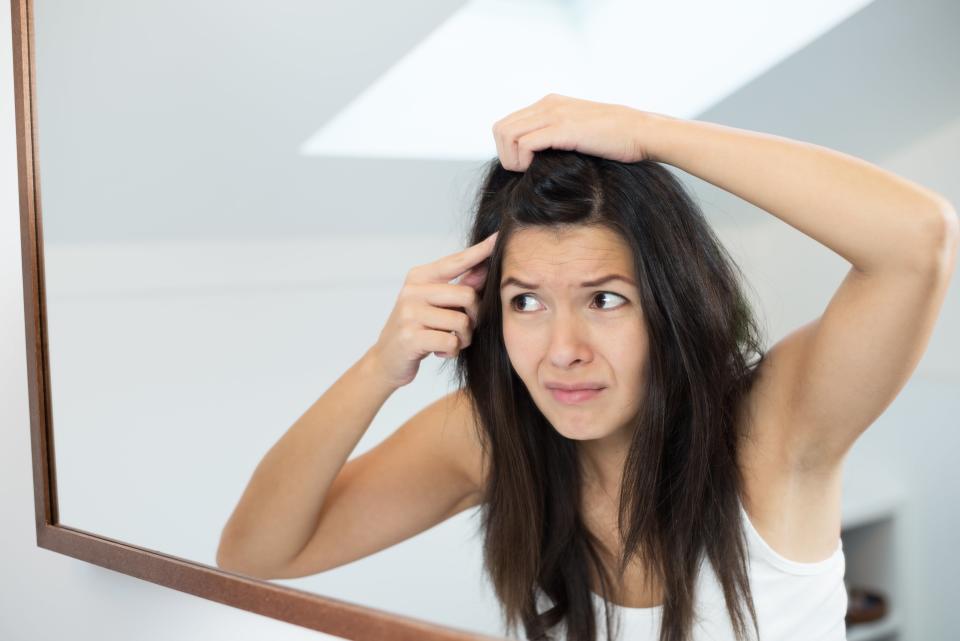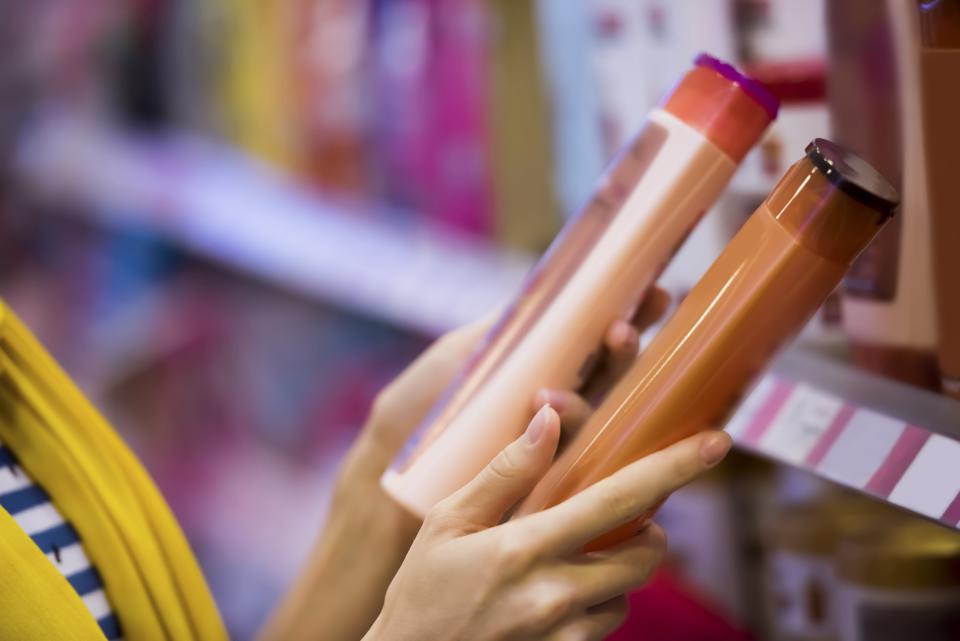How to Treat Scalp Zits, According to Experts
For those of you who struggle with scalp zits, you know that getting rid of them isn’t as simple as dabbing on a spot treatment from your stash of go-to skincare products. Just like acne on your face or back (otherwise known as “bacne”), these blemishes require a specific skincare regimen. Not sure what exactly that entails? To help make things easier, we talked to the experts to figure out why these pesky pustules may appear and the best way to treat them.

(Photo via LarsZahnerPhotography/Getty)
While pimples on the scalp can affect anyone, there are certain factors that may cause them to rear their ugly heads. “Scalp zits are caused by a combination of factors, including bacteria, oil, and excess skin cells accumulating in the hair follicles,” explains Michele Farber, a New York City-based dermatologist at Schweiger Dermatology Group. Product buildup from hair gel, dry shampoo, or leave-in conditioner can clog the hair follicle, and not washing your hair thoroughly (to get all of that product out) can compound the issue. If you sweat profusely during workouts, this may also put your scalp at risk, especially if you’re wearing a hat. Yeast tends to overgrow in hot, humid environments, so sweating while wearing any kind of head covering can trigger scalp breakouts.
But you’re not destined to have blemishes forever (and you won’t have to change your beauty or workout routine, either). According to Jennifer Chwalek, a New York City-based dermatologist at Union Square Laser Dermatology, “Often these zits resolve on their own. And if there is just one or two, you may not need to treat them with anything.” Just remember: Hands off. “Don’t pick,” says Farber. “[Instead] use anti-inflammatory shampoo to calm the cause of the scalp acne.” If you’re getting multiple scalp zits at a time (more than one or two) or recurring outbreaks, it’s time to try an over-the-counter remedy like a shampoo or spot treatment.

(Photo via ShotShare/Getty)
One of the easiest solutions is shampoo, which gently cleanses the affected area without stripping the scalp of its protective barrier. Look for botanical oils, like tea tree oil and peppermint, or salicylic acid, glycolic acid, benzoyl peroxide, ciclopirox (an anti-fungal), and ketoconazole (another anti-fungal). “Any anti-dandruff shampoo or shampoos containing salicylic acid can help. They work by exfoliating the clogged pores and removing excess oil,” says Chwalek. As a general rule, if you don’t notice any change in your condition with OTC products, be sure to follow up with a dermatologist. Topical steroids or antibiotics are sometimes needed for more severe bouts, but your doctor can find the best hair care routine for you.
To learn which scalp shampoos and treatments are worth your money, read on.

Nizoral Anti-Dandruff Shampoo ($15): “Nizoral is a common anti-dandruff shampoo. It works as an anti-fungal targeting the yeast that causes dandruff but also folliculitis and scalp pimples,” explains Chwalek. Ketoconazole (an anti-fungal) is the star ingredient is this product, which can help control any itching or scaling that’s associated with breakouts beneath your hair. As the active ingredients are quite strong, use only twice a week (in between your normal shampoo). Work it into a rich lather in your hair and rinse clean.

Fekkai Apple Cider Shampoo ($14): “This option contains apple cider vinegar, which is known to improve the pH balance of the skin, kill bacteria (apple cider is anti-microbial), and dissolve dead skin cells that plug pores and cause acne,” says Chwalek. It clarifies without drying out your hair, so you can lather up several times a week. For best results, massage a small amount into damp hair and rinse well.

Paul Mitchell Tea Tree Special Shampoo ($34): “Tea tree oil has anti-inflammatory and anti-microbial properties so it can calm red, irritated skin,” says Chwalek. This is what makes it such a popular choice in many hair and beauty products. Used in this shampoo, it effectively removes dead skin cells, oil, excess product, bacteria, and other gunk that might lead to pimples on your scalp. Paul Mitchell’s formula also relies on lavender and peppermint oil, which may soothe existing zits and increases blood circulation (it’s also been known to potentially improve hair growth). In the shower, apply a small amount to damp hair and gently massage. Rinse thoroughly.

Aveda Pramasana Purifying Scalp Cleanser ($35): This gentle cleanser is specially formulated to cleanse your scalp, rather than your hair. It relies on plant-derived ingredients including babassu oil, neroli oil, and antioxidant-rich tamanu oil. According to Chwalek, “Aveda’s scalp cleanser uses a blend of salicylic acid (a natural form of it from wintergreen), which helps to exfoliate the scalp, as well as a blend of ingredients like seaweed extract to help balance sebum levels.” With its impressive cocktail of botanical ingredients, this tingly scalp cleanser will leave you feeling clean and refreshed. Apply to a wet or dry scalp and follow with shampoo.
Follow us on Instagram to score more of the haircare and skincare info you need to know.
Brit + Co may at times use affiliate links to promote products sold by others, but always offers genuine editorial recommendations.


